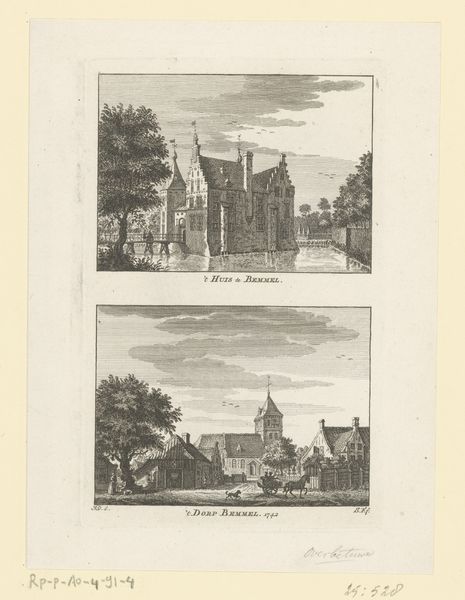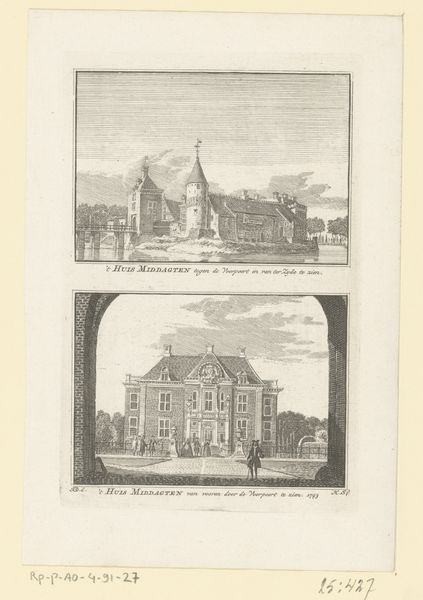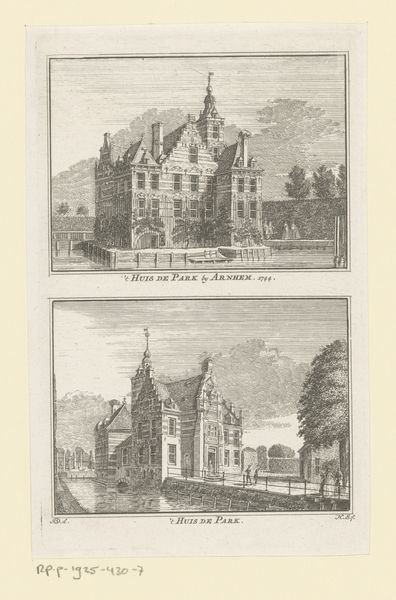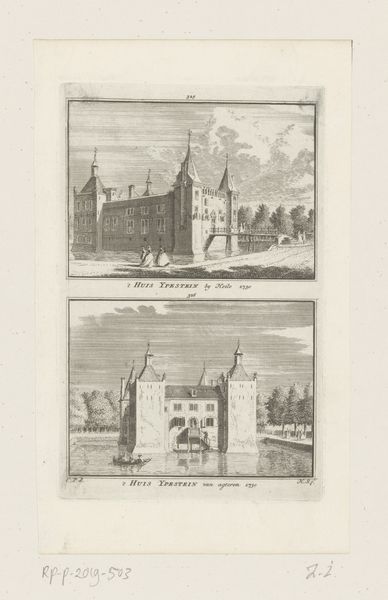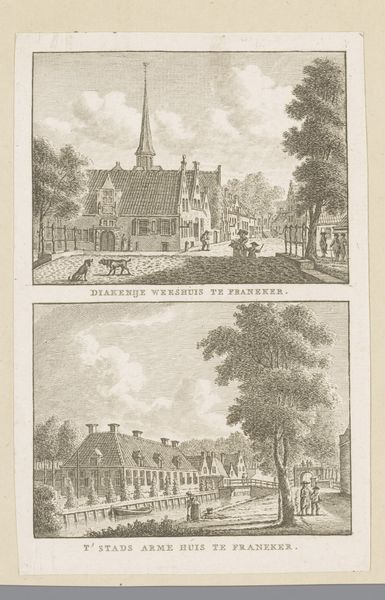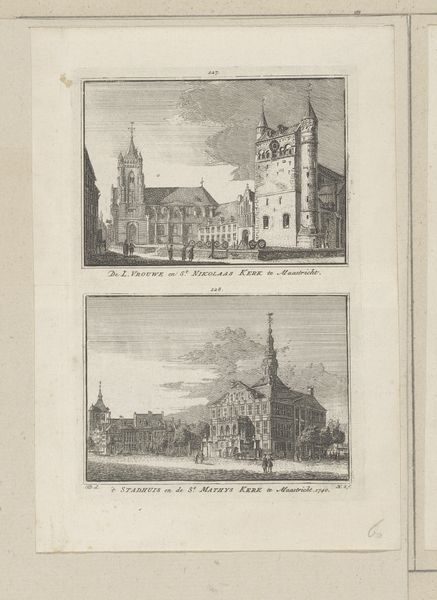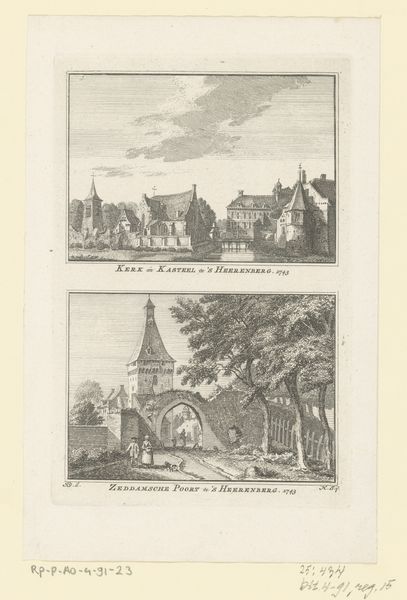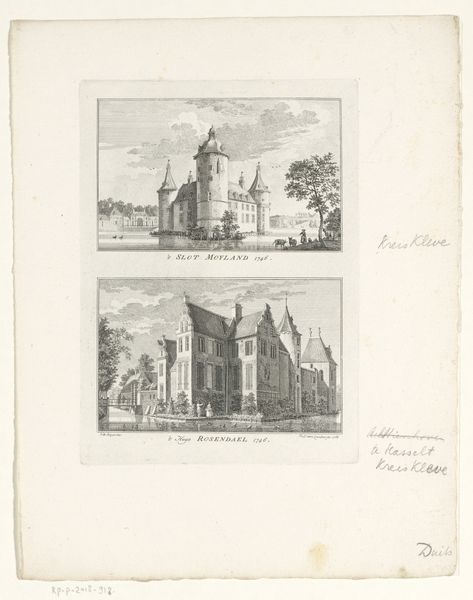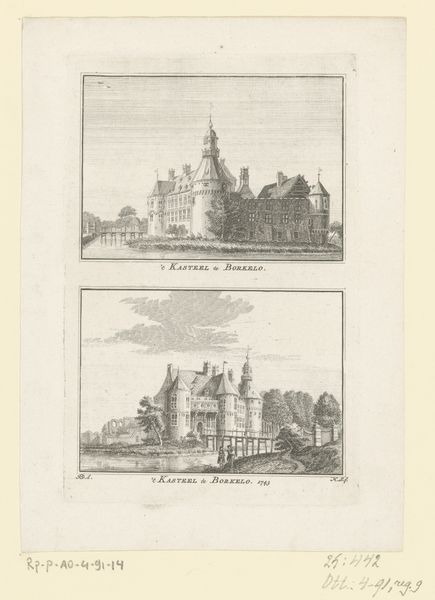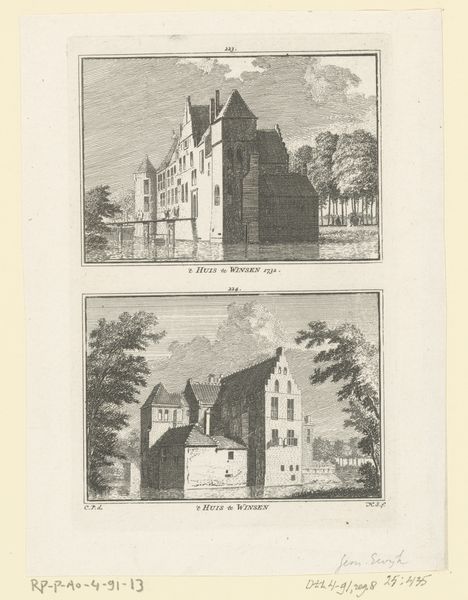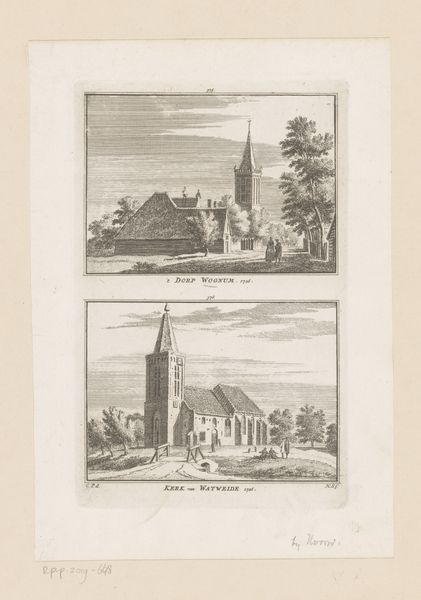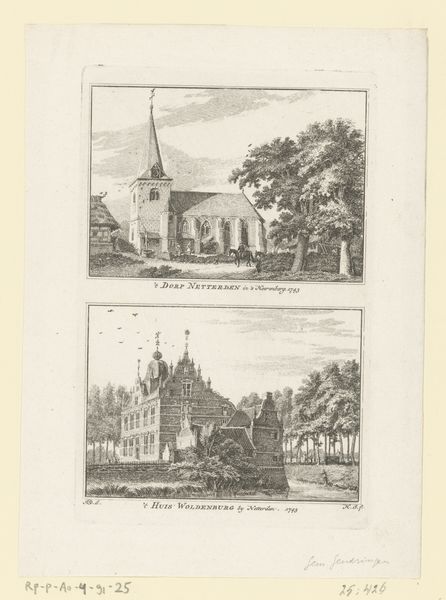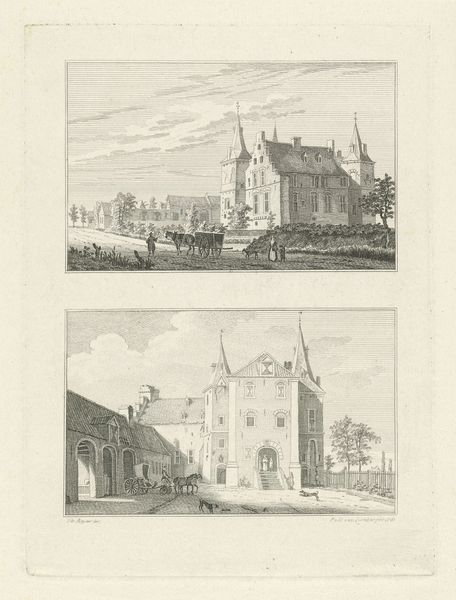
Dimensions: height 167 mm, width 109 mm
Copyright: Rijks Museum: Open Domain
Hendrik Spilman made this print of the Ehze Castle and Almen in the mid-18th century. It’s an engraving, meaning Spilman would have used a tool called a burin to cut lines into a copper plate, then inked and pressed it to create multiple identical images. Consider the labor involved. From mining the copper to the skilled handwork of the engraver, this print represents a whole chain of production. Each precise line speaks to Spilman’s mastery, but also to the collaborative nature of printmaking at this time. The crisp lines and fine details emphasize the architecture of the castle and church, conveying a sense of order and prosperity. The scenes are almost like advertisements for the places they depict, suggesting a commercial aspect to Spilman's work. By focusing on materials, making, and context, we can move beyond just admiring the images themselves. Instead, we can think about the social and economic forces that shaped their creation.
Comments
No comments
Be the first to comment and join the conversation on the ultimate creative platform.
